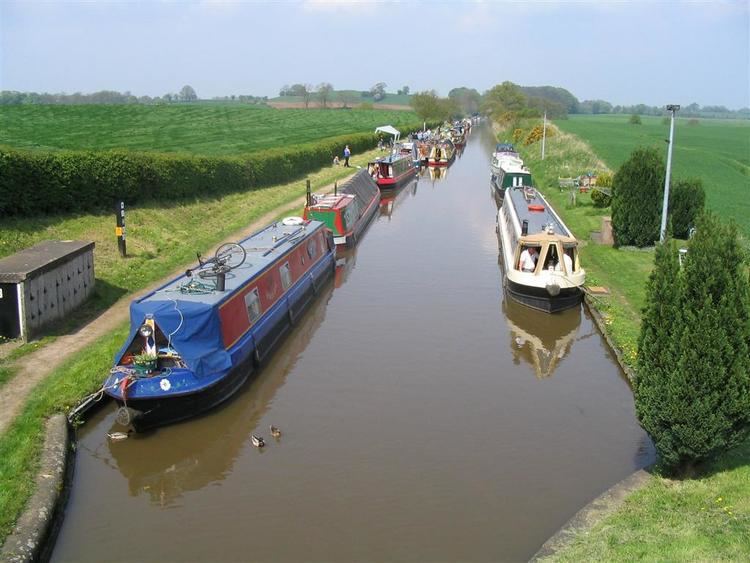Maximum boat beam 7 ft 0 in (2.13 m) Navigation authority Date completed 1835 Date of act 1825 | Status Navigable End point Nantwich Locks 26 | |
 | ||
Connects to | ||
The Birmingham and Liverpool Junction Canal was a canal in England which ran from Nantwich, where it joined the Chester Canal, to Autherley, where it joined the Staffordshire and Worcestershire Canal. Forming part of a major link between Liverpool and the industrial heartlands of the Midlands, the canal was opened in 1835, and merged with the Ellesmere and Chester Canal Company in 1845, which became the Shropshire Union Railways and Canal Company in the following year.
Contents
History
The canal was authorised by an Act of Parliament in 1825. It was to serve as a link between the industrial Midlands and the Port of Liverpool. The project engineer was Thomas Telford, who faced a number of engineering problems during construction, but the canal was finally finished in 1835. It was built as a narrow canal, for boats with a maximum width of 7 ft (2.1m). At its northern end, the canal joined the Ellesmere and Chester Canal, just above the Chester Canal's basin at Nantwich. At the southern end, it joined the Staffordshire and Worcestershire Canal at Autherley Junction near Wolverhampton, which provided access to the Birmingham network of canals.
The length of the canal was 39 miles (62 km) and it required 26 locks to drop the 176 ft (53.7m) from Autherley to Nantwich. These were mainly concentrated in flights, with five locks at Tyrley, another five at Adderley, fifteen at Audlem and two at Hack Green. A stop lock reduced the flow of water between the canals at Autherley Junction, and the main supply of water was from the Belvide Reservoir, on the initial section near to where the canal crossed Watling Street (now the A5 road) on an aqueduct. This was not adequate, and so in 1836 it was doubled in size; it now has a capacity of 70 million cubic metres. This was later supplemented by the outflow from the Barnhurst sewage treatment works which was built near Autherley Junction, to serve the people of Wolverhampton.
The company worked closely with the Ellesmere and Chester Canal Company, which owned the canals from Ellesmere Port to Chester and from Chester to Nantwich, in a bid to maintain their profits against competition from the railways. This led to the company being taken over by the Ellesmere and Chester Canal Company in 1845, and the following year the joint company became the Shropshire Union Railways and Canal Company, by an Act of Parliament which also authorised the taking over of a number of other canals. In 1847, the new Company agreed to the terms of a lease from the London and North Western Railway Company, and so lost its independence after little more than a year, but continued to manage the canals under its control.
Operation
Despite its rural character, the canal was an important route for trade between two major centres, and so remained profitable long after many canals had become uneconomic. When most of the Shropshire Union system was closed by an Act of Abandonment in 1944, the former Birmingham and Liverpool section and the route onwards to Ellesmere Port remained open, as it was still an important carrier of metal and oil products, and remained so until the mid-1960s.
The rural character of the canal is now one of its greatest assets, in the age of pleasure cruising and boating holidays.
